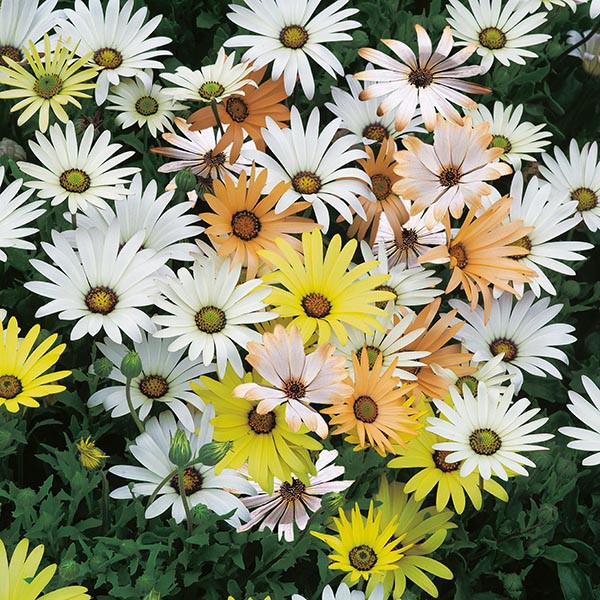
► A bunch of oranges: Top – African Breeze up-close; below – my newly-acquired ornithgalum ahead of planting out; bottom – orange companions osteospermum (left) and English marigold.
ORANGE – no, not any old orange but a penetratingly vibrant shade – is not a colour that pops up all over the place in the garden. In fact, like a true blue, it’s something of a minority spectacle in our beds and borders.
Then I came eye-to-eye with this botanical beauty – Ornithogalum dubium African Breeze.
Yes, I could rattle off a few orange Oohs and Aahs such as Trollius Orange Globe, the Californian poppy, pansy Frizzle Sizzle Orange, tulip Ballerina, calendula, the popular English pot marigold, Crocosmia Lucifer, Zinnia Orange King, various nasturtiums, one or two osteospermums, bearded iris Tapatio, Coreopsis Early Sunrise, Oriental poppy Allegro, geums Totally Tangerine and Borisii, Calibrachoa Superbells Dreamsicle and a good number more. Not to mention shrubs with bright orange autumn berries such as pyracantha Orange Glow.
Several of these veer towards a deep orangey-red and are not, I contend, in the same top league as African Breeze.

What few orange blooms show up in my garden do inject plenty of cheer. Indeed, I read that orange blooms are thought to symbolise excitement, friendship, joy and good health, so it’s well worth hanging on to them.
And so to African Breeze, which I bought in full flower from a local store and made me stop in my tracks. I hadn’t seen anything quite like it.
Shortly afterwards, the realisation dawned – my bulbous purchase is closely related to the chincherinchee which bears dense clusters of many cup-shaped white flowers which are plentiful along South Africa’s Western Cape.
On a personal note, some friends who emigrated to South Africa many years ago visited us on a return trip and presented us with a bunch of chincherinchees – Ornithogalum thyrsoides – which we popped into a vase of water and which were still blooming their hearts out a month later.
These, though, are a cooling white and not like a bowl of tangerines, the proud boast of their close cousins.
The genus consists of 80 species, with plants flourishing in a variety of habitats, ranging from dry, rocky hillsides to meadows and woodland across central and southern Europe, the Mediterranean, parts of Romania, tropical Africa and South Africa.
So it stands to reason that these plants are not hardy in finger-tingling, toe-freezing, sub-zero levels, particularly in northern regions of the UK.
If you live “upcountry,” as we Southerners tend to say, my advice would be to lift the bulbs and take them to the relative comfort of a frost-free spot or, alternatively, plant in a pot and manoeuvre that to a safer haven when the weather cools.
Often known as Star of Bethlehem, these stunners grow to around 12in high and parade their livery from late winter to early summer, dependent on where you live.
I also note that the Latin specific epithet dubium means “unlike others of the genus”.
How absolutely right is that!









